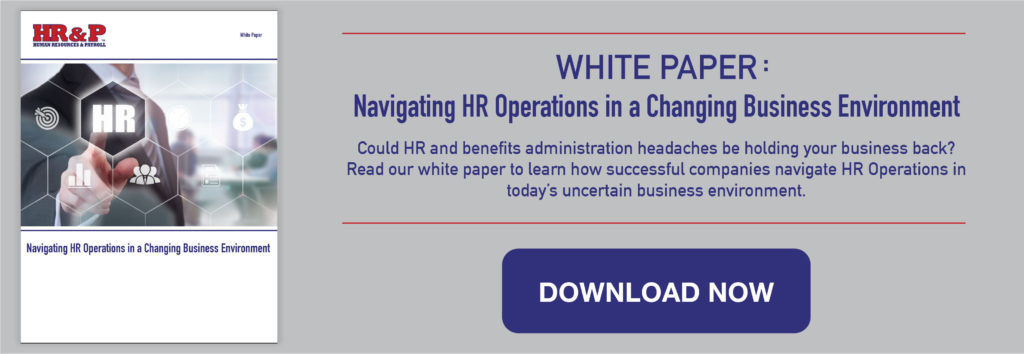
“Nearly three-quarters of private sector workers receive paid sick days from their employers. [NPR]
In our last post, we covered the intricacies of the Family Medical Leave Act (FMLA). This week we’re going to look at paid sick leave, which is now a requirement in 8 U.S. states and Washington, D.C., as well as in numerous cities. Paid sick leave laws differ from the Family Medical Leave Act and it’s important to understand the distinctions between the two.
The FMLA is a federal law that grants certain employees up to 12 weeks of unpaid, job-protected leave per year. Companies with 50 or more employees must follow FMLA requirements. Paid sick day policies, on the other hand, are not federally mandated (yet). Typically, paid sick leave is a minimum number of paid sick hours or days that are offered to employees each year based on stipulations outlined in certain state or local laws.
Paid sick leave has a lower employee threshold (15 or more employees) and is usually meant for short-term absences, though employers may allow workers to use their paid sick leave and their FMLA time concurrently.
40 paid sick leave laws…and counting. Which ones do you know about?
“In the U.S., 8 states, 29 cities, 2 counties and Washington, D.C. have paid sick time leave laws on the books.” [A Better Balance.org]
In our FMLA post, we talked about the challenges of staying both informed and compliant with the law when you have employees working in multiple states. As you’ll see, the same is true with paid sick leave. Connecticut started the trend — requiring employers with 50 or more employees to provide up to 40 hours of paid sick leave each calendar year to non-salaried workers. Since then, more states have been passing their own laws that require employers to offer anywhere from three to seven paid sick days a year.
Currently, eight states: Connecticut, California, Massachusetts, Oregon, Washington, D.C., Vermont, Arizona, Washington State, and Rhode Island, have some kind of paid sick leave ordinance. All eight states also provide paid sick leave for employees caring for a sick child or spouse, and in some states, that also includes a domestic partner, a parent, grandparent, in-law, sibling, or grandchild.
It’s also important to be aware of each state’s allowances for how employees may use their sick time. In all eight states, for example, sick time can be used to take time off work for safety reasons related to domestic violence issues or if the employee is the victim of sexual assault or stalking. In Oregon, paid sick leave can also be used to bond with a newborn, adopted or newly placed foster child and to mourn the death of a family member.
Other variances in state laws include the rate in which sick time is earned and the amount at which employers can place a cap. Although these states provide the minimum hours, employers can use their discretion in offering more than the minimum amount.
What if my business offers PTO?
Many companies have replaced employees’ traditional, discreet supply of “vacation days” and “sick days” with “Paid Time Off (PTO).” The PTO concept works like a savings account in which employees accrue time off, typically gaining a certain number of hours per month or pay period until they reach their yearly limit. They are then free to use those hours however they need to.
Generally, companies who offer PTO do not have to provide additional paid sick days required under state or city paid sick leave laws. However, even if your PTO plan is more generous than the state law in the number of hours or days offered, that isn’t enough to guarantee compliance. Your PTO must also allow employees…
- To use the same amount of leave for the same reasons and under the same conditions as outlined in the state or city ordinance.
- To accrue and/or carry over sick days as stated in their state and local sick leave laws.
Questions and confusion can still arise, particularly when a business offers several different PTO plans to their employees. HR&P Regulatory Affairs and Compliance Officer, Kate Morgan, worked with a client who had multiple PTO plans based on employee class.
“We had a client who was affected by the Arizona Paid Sick Time law that went into effect July 1. We audited the PTO plan for each Arizona employee, and identified those whose current PTO plan did not meet the standards of the law. We sent the client a list of affected employees, and updated their PTO accrual rate so that they would be compliant with the new law.”
There are other pros and cons to a company using PTO. An employee who remains healthy throughout the year benefits from some extra paid vacation time, while someone who experiences a prolonged flu typically has enough days to cover their absence with pay. But there is also a good chance that an employee who wants to reserve their time for a big trip at the end of the year may come into work sick, exposing other employees and causing a dip in productivity.
More paid time off has public support—and they want employers to pay
According to a recent study by the Pew Research Center, “about three-quarters of Americans who support paid leave for mothers (74%) or fathers (76%) following the birth or adoption of a child say pay for time off should come from employers, and a similar share (72%) of those who favor paid medical leave for workers with a serious health condition say the same.”
It’s clear that paid sick leave is an issue that more and more businesses will face in the future. Even businesses who aren’t required to offer paid leave (whether because of their size or their location) may decide that it’s a good idea to include it in their offer package if they want to maintain a competitive edge in the hunt for talent.
Have questions about the Paid Time Off or want assistance with other HR compliance and administration issues? HR&P can help. Please contact us.
TESTIMONIALS
As we’ve grown, so have our administrative and payroll needs. That’s why we’ve partnered with HR&P. HR&P supports us every day with human resources, payroll, benefits and compliance so we can focus on being the best BB’s Cafe we can be!
Since 2010, my company has grown to over five hundred employees. With our tremendous growth we needed a human resources and payroll company that could grow with us. That company is HR&P. And as laws have changed, like the Affordable Care Act, HR&P has kept us in compliance. I focus on growing Twin Eagle. I trust HR&P with the rest.
We are the industry leader in Oil Spill Cleanup Products and have dealt with numerous Oil Spill disasters. Knowing up close what a disaster looks like we choose to avoid them in our offices. HR&P guides us through the land mines of HR, Payroll and Benefit compliance so my team can focus solely on helping our clients with their problems, and we avoid our own.
One of the best things we did for our business was to partner with HR&P. They’re the experts in human resources, payroll and benefits administration.
HR&P’s web based solutions make it easy for us to manage our employee’s needs. They also help us stay compliant with the Affordable Care Act and with “the alphabet soup” of constantly changing Governmental regulations.
I run a restaurant, from early in the morning to late at night, our team works hard to deliver great food in a fun atmosphere.
But there’s a lot more to running a business like human resources, payroll, benefits and compliance. So we turn to HR&P.
Outsourcing to HR&P keeps us focused on our business.
NEWSLETTER
To receive more HR articles and tips that keep you informed, sign up for our newsletter.

